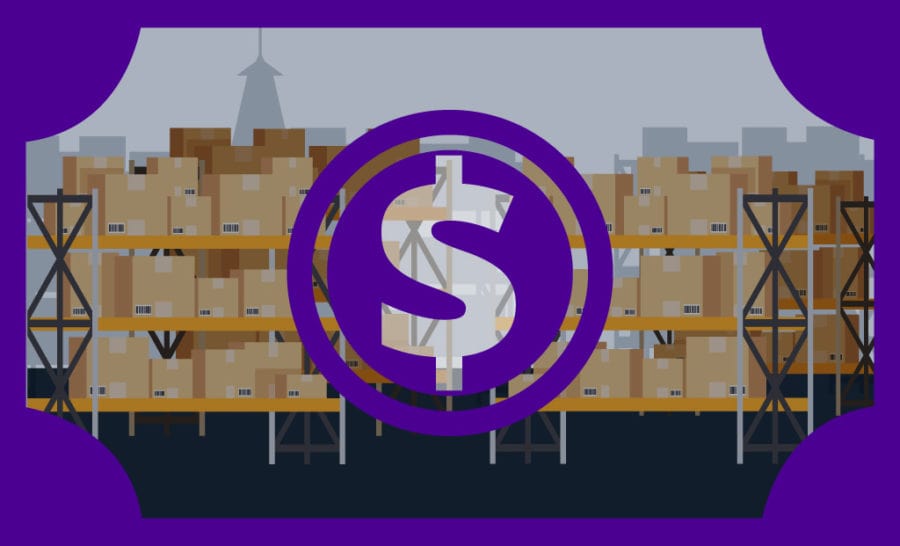Manufacturing and distribution enterprises not only incur costs in procuring, maintaining, and transporting inventory but also in storing/holding them at their premises. Inventory such as raw materials, semi-finished or finished goods, need to be stored for a certain period of time before they are dispatched for respective purposes. In the meantime, enterprises incur costs to store and maintain them.
Holding a certain quantity of inventory is a delicate, balancing act for these enterprises. If they keep less inventory, they run the risk of stalling production or unable to meet customer demand on time. If they keep more inventory, they run the risk of over-stocking leading to an increase in overhead costs and a decrease in profit margins.
Considering that maintaining inventory is an expensive affair (30 to 50% of overall operating costs), they have to maintain just the optimum amount of inventory to control and reduce inventory holding costs.
What is Inventory Holding Cost?
As the name suggests, inventory holding costs are charges incurred for storing goods within the warehouse. These costs include warehouse space rentals, maintenance, security, goods depreciation, and insurance.
There are various types of inventory holding costs.
Inventory Capital
Costs incurred in procuring the inventory/raw materials. This also includes taxes and interest that are added to the procurement costs.
Inventory Service
Costs incurred in maintaining and servicing the goods in the warehouse or factory premises. Costs pertaining to inventory management/ERP software, annual maintenance, relevant hardware, taxes, and insurance are also included.
Inventory Risk
Risk costs owing to unsold inventory due to goods damage, expiration, obsolescence, theft, or loss of value over a period of time.
Inventory Storage
Costs incurred to transport and store goods in a warehouse. These costs include warehouse rental, insurance, shipping & logistics cost, maintenance cost, and security.
To keep inventory holding costs in check, enterprises should have an automated system in place that enables them to forecast accurate demand and plan accordingly.
How to control and reduce inventory holding costs with ERP?
Optimizing Re-order Points (ROP)
Enterprises can easily set Re-order Points (ROP) for materials that they procure in the ERP software. This can be for raw materials, tools, parts, sub-assemblies, and semi-finished goods. ROP can be set based on consumption trends, customer demand forecast, and existing and upcoming orders. ROP helps them to track inventory levels and raise a replenishment order as soon as an item is about to go out of stock. It ensures that there are just enough materials in stock till the replenishment arrives on time. This prevents disruption in regular operations and ensures on-time delivery to customers.
Demand Forecasting
With an ERP, enterprises can easily solve the issue of accurately forecasting customer demand and accordingly plan inventory procurement and storage. This can be done by taking current sales data, historical sales, and future opportunities from the in-built CRM module. Data trends out of these inputs can help enterprises to predict future demands and improve the accuracy of inventory procurement.
Supply Chain Visibility
The most crucial factor that affects product quality is the lack of supply chain visibility. With ERP software, enterprises can get real-time data across the entire supply chain. With the ERP integrated with Shipping, Bar-code, and RFID technology, manufacturers can track goods movement across the supply chain. With this, enterprises know when their materials are due to arrive and make inventory adjustments accordingly without hurting production schedules.
Warehouse Management
Manufacturing and distribution enterprises can reduce inventory holding costs by streamlining stock administration and increasing its efficiency. With ERP’s warehouse management features, They can track the shelf life of each material, allocate storage bins based on categories (item types) & other classifications, instantly record material details on arrival and conduct inventory counting using cycle count or full inventory methods.
Using integrated bar-code technology, personnel can quickly conduct inventory counting based on item types, location, and warehouse. With this, enterprises have a ready count of materials at all times, thereby preventing inventory stockouts.
Conclusion
A capable ERP software with its in-built CRM, inventory management, supply chain, and warehousing features can help enterprises drastically cut down on their inventory holding costs. Apart from the time and cost-saving, their customer loyalty improves owing to continuous production and on-time delivery.
OmegaCube ERP is designed to automate inventory management workflows and reduce inventory holding costs. With its rich functionalities and integration capabilities, manufacturing and distribution enterprises can easily manage their inventory requirement and control supply-chain workflows.
Contact us for a demo!




